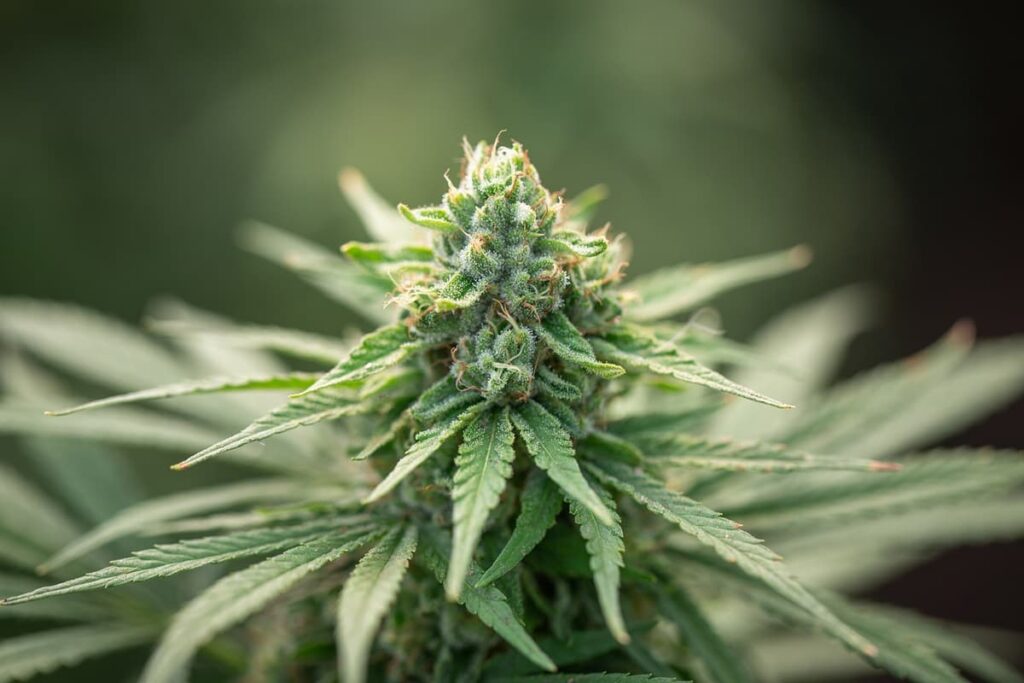Which Marijuana Stock is the Biggest One of All?
Table of contents
Table of contents

With the launch of our new website, we have mapped out 12 categories of disruptive technologies that we’ll continue to write about for our rapidly growing audience of lovely readers. After four years of writing about all facets of disruptive technologies, we’ve noticed how often people come around who have never invested before and want to start now because they’re so excited about a particular technology. This puts us in an excellent place to educate people who are new to investing about all the pitfalls out there – like ICOs or OTC stocks. Surprisingly, the investment theme we cover which attracts the most interest from newbie investors is marijuana.
Like most disruptive technologies, the opportunity to make some serious money from the legalization of marijuana in the United States is largely restricted to startups, a fact that hasn’t gone unnoticed by some of the nation’s most prominent venture capitalists. Sure, we put out a list of 57 “marijuana stocks” but if you go through it in detail you’ll see how most are OTC garbage that you shouldn’t touch with a ten foot pole. Legitimate plays include pharmaceutical companies looking at cannabinoids for therapies or the large Canadian growers. There’s also an ETF which you can buy called the Horizons Marijuana Life Sciences ETF (TSE:HMMJ) which we picked up a few shares in on 4/20 to show you how. While interest in marijuana has waned in favor of token mania, that’s a good thing because we can now start to look at the economics of the larger growers to see what sort of businesses can be created by growing marijuana and selling it legally. Let’s dig into the biggest marijuana company out there by market cap, Canopy Growth (TSE:WEED).
When you look at the size of a company, you don’t do stupid isht like assume that NVIDIA at $190 a share is more expensive than Walmart at $86 per share. While NVIDIA’s share price is more, that doesn’t mean it’s more expensive or that the company is bigger. In order to gauge the size of a company, we multiply the shares outstanding by the price per share. You can see how this works in the below example:
If you multiple the shares outstanding (171.3 million) by the price per share (11.82), you’ll end up with 2.02 billion CAD (or $1.61 billion USD). We can then say that Canopy Growth Corp (TSE:WEED) has a market cap of $1.61 billion which happens to make it the biggest pure-play marijuana stock out there. Not surprisingly, WEED makes their money from growing weed and selling it. A lot of it. In fact, WEED is more than twice the size of their next closest competitor. If you were going to buy one weed stock, you couldn’t go wrong by deciding to buy the biggest one. This is because of something called economies of scale. Once you’re the biggest fish in the pond, it’s much easier to get bigger. It’s the Pareto Principal at work again, and it also helps to explain the uneven distribution of wealth that everyone spends lots of time complaining about instead of setting out to create their own wealth – by buying shares in weed stocks of course.
Now that we know which marijuana stock is the biggest of them all, let’s take a look at their latest quarterly report for Q1 of fiscal 2018. All numbers will be in USD since most of our readers hail from the land of the free. Since the main business of WEED is to grow and sell weed, the amount of marijuana they are selling is a key metric to watch going forward. Last quarter they sold 4,034 pounds of cannabis. To put that number in perspective, here’s what 1,000 pounds of weed looks like:
So Canopy Growth managed to sell 4X the amount you see above in just 90 days. If you think the fact that they sold two tons of marijuana is impressive, you’ll be even more wowed to learn that they harvested 12,290 pounds of weed during the same time frame (about 6 tons). Getting back to what they sold, those 4,034 pounds turned into $12.7 million in revenues for Q1 2018. We can easily check those numbers. Since they sold their product for an average price of $6.36 a gram (at a cost of $2.78 per gram), back of the napkin math would show revenues of $11.6 million so that seems about right (they also sell oils as well).
Even with all the marijuana they are selling, WEED still isn’t making a profit yet. They burnt through around $3.52 million in cash last quarter, but with $92 million in cash on hand they can go for some time without having to worry about raising more money. What we’re more interested in finding out is just what potential this company has. One way to answer ask this question would be to find out just how much weed Canadians smoke. To come up with that number we turned to The Office of the Parliamentary Budget Officer which actually calculates these numbers. The projected total resident consumption of dried cannabis for 2018 in tons by province is as follows:
That equates to a total of 706 tons of dried cannabis or 638 million grams. Since Canopy Growth sold their crop at an average of $6.36 per gram, this gives us a total addressable market size of around $4.05 billion for the entire country of Canada (or about $1 billion in sales per quarter). Given that Canopy Growth brought in just $12 million last quarter shows just how little market penetration they have achieved and what potential there is. The next question we might have is just what production capacity WEED is capable of.
The company has over a half a million square feet of growing space and a grow cycle of 12 weeks, but what ultimately limits them is their license to sell. As you can imagine, cannabis is a highly regulated product and Canopy Growth is licensed to sell 23 tons of dried cannabis and nearly 11 tons of oils per year. Since they sold around two tons of dried cannabis last quarter, they’re still at less than half their licensed capacity.
This begs the question. If Canadians will consume 176.5 tons of dried cannabis in a single quarter during 2018, and Canopy Growth sold about 2 tons last quarter, where the heck is that other 174 tons of marijuana coming from? While we know the market is quite fragmented, this can’t all be coming from their competitors. The answer probably lies in black market sales. The truth is that recreational cannabis isn’t actually legal in Canada yet. There is a bill (Bill C-45) that is pending which takes steps to make recreational cannabis legalized (you can review all the details here). Getting into the current state of medical marijuana sales in Canada is a topic for a different article so stay tuned.
Conclusion
While we picked up a few shares of the HMMJ ETF on 4/20 to show our readers how they can access Canadian stocks or ETFs through Interactive Brokers, we’d much rather spend our investment capital on safer strategies like dividend growth investing (and a smaller portion on solid disruptive technology stocks). Still, we’ll continue to cover marijuana as an investment theme because it gives us the opportunity to get in front of so many new investors who we can then lead in the right direction when it comes to investing in general. You probably won’t get rich off investing in the biggest marijuana stock of them all but at least you’ll be taking the first steps towards making investment planning a part of your future focus.
Sign up to our newsletter to get more of our great research delivered straight to your inbox!
Nanalyze Weekly includes useful insights written by our team of underpaid MBAs, research on new disruptive technology stocks flying under the radar, and summaries of our recent research. Always 100% free.



















